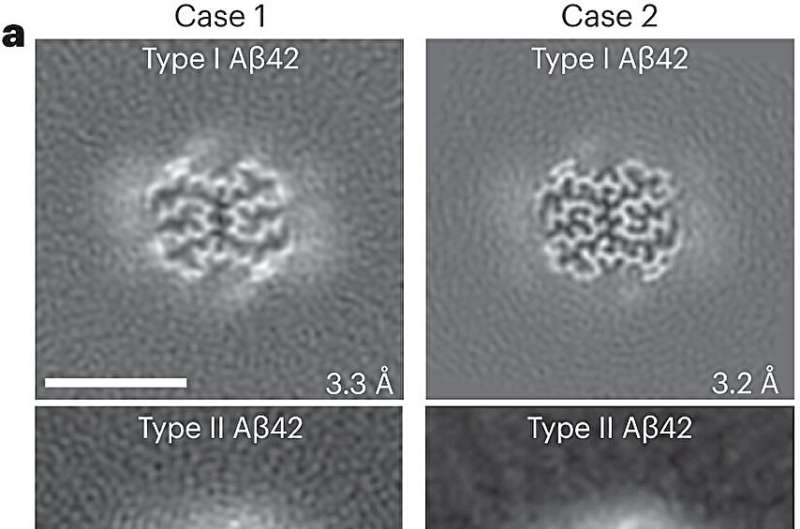
More than 90% of people with Down syndrome, the most common chromosomal disorder in humans and the most frequent genetic cause of intellectual disability, are diagnosed with Alzheimer’s disease by ages 55–60.
A new study recently published in Nature Structural and Molecular Biology uses leading-edge cryo-electron microscopy imaging technology to determine whether differences exist between the protein structures in those with Alzheimer’s disease and those with both Alzheimer’s disease and Down syndrome.
“Just like in Alzheimer’s disease, the neuropathological phenotype in those with Down syndrome and Alzheimer’s disease is characterized by the presence of amyloid ? (A?) and by abnormal accumulation of tau protein,” said Ruben Vidal, Ph.D., the Luella McWhirter Martin Professor of Clinical Alzheimer’s Research at the Indiana University School of Medicine and lead investigator of the study.
“The structures of A? and tau filaments in Down syndrome have not been previously investigated, and it is unknown whether they are different from those of Alzheimer’s disease.”
Researchers studied images of A? and tau filaments, which occur in individuals with Down syndrome, and compared them with those seen in the most common form of Alzheimer’s disease. They found that the protein structures of A? and tau filaments in people with both Down syndrome and Alzheimer’s disease have similarities to those found in Alzheimer’s disease.
Vidal said their findings may lead to better treatments for Alzheimer’s disease patients and individuals with Down syndrome.
“This study is the first comparison at the near atomic level of A? and tau filaments between individuals with both Down syndrome and Alzheimer’s disease and individuals with only Alzheimer’s disease,” Vidal said.
“Importantly, the study found variations in the structure of A?, but no substantial variation in the structure of tau filaments between individuals with Alzheimer’s disease and both Down syndrome and Alzheimer’s disease. This supports the notion of common mechanisms operating in people with sporadic Alzheimer’s disease and in people with both Down syndrome and Alzheimer’s disease.”
“This knowledge is crucial for understanding Alzheimer’s disease in people with Down syndrome and assessing whether adults with both conditions could be included in Alzheimer’s disease clinical trials. People with Down syndrome are living longer than ever, but almost all of them are dying of Alzheimer’s disease when they get older.”
Vidal, also an investigator in IU School of Medicine’s Stark Neurosciences Research Institute, said the research team used cryogenic electron microscopy to get a close-up, 3D view of the structure of A? and tau filaments in two individuals with both Down syndrome and Alzheimer’s disease. The study revealed two novel types of A? filaments in the vascular compartment with structures different from those previously reported in Alzheimer’s disease.
Vidal said the study’s findings show it is important to include people with both Down syndrome and Alzheimer’s disease in clinical trials targeting the A? or tau filaments. He said there are similarities between the mechanisms at play in amyloid aggregation, but more research is needed to determine whether the differences observed in vascular A? deposition are unique to those with Down syndrome.
“We are thrilled that our cryo-EM imaging and 3D modeling techniques have facilitated the determination of the atomic structures of amyloid beta and tau fibrils in individuals with Down syndrome, shedding light on the connection between Down syndrome and Alzheimer’s disease,” said Wen Jiang, Ph.D., professor of biology at Purdue University and co-corresponding author of the study.
“We are fortunate to have the Purdue Cryo-EM Facility, which provides exceptional resources and services that have made this research possible. We are grateful to the patients who donated their brains to the research.”
More information:
Anllely Fernandez et al, Cryo-EM structures of amyloid-? and tau filaments in Down syndrome, Nature Structural & Molecular Biology (2024). DOI: 10.1038/s41594-024-01252-3
Citation:
High-resolution images reveal similarities in protein structures between Alzheimer’s disease and Down syndrome (2024, March 29)
high-resolution-images-reveal-similarities.html
.
. The content is provided for information purposes only.
